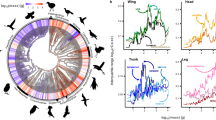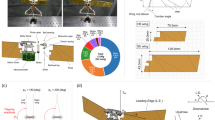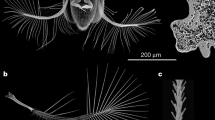Abstract
The flight ability of animals is restricted by the scaling effects imposed by physical and physiological factors. In comparisons of the power available from muscle and the mechanical power required to fly, theoretical studies have predicted that the margin between the powers should decrease with body size and that flying animals have a maximum body size. However, predicting an absolute value of this upper limit has been difficult because wing morphology and flight styles vary among species. Albatrosses and petrels have long, narrow, aerodynamically efficient wings and are considered to be soaring birds. Here, using animal-borne accelerometers, we show that scaling analyses of wing-flapping frequencies in these seabirds indicate that the maximum size limit for soaring animals is a body mass of 41 kg and a wingspan of 5.1 m. Soaring seabirds were observed to have two modes of flapping frequencies: vigorous flapping during takeoff and sporadic flapping during cruising flight. In these species, high and low flapping frequencies were found to scale with body mass (mass ^-0.30^ and mass ^-0.18^) in a manner similar to the predictions from biomechanical flight models (mass ^-1/3^ and mass ^-1/6^). The scaling relationships predicted that animals larger than the limit will not be able to flap fast enough to stay aloft under unfavourable wind conditions. Our result therefore casts doubt on the flying ability of large, extinct pterosaurs. The largest extant soarer, the wandering albatross, weighs about 10 kg, which might be a pragmatic limit to maintain a safety margin for sustainable flight and to survive in a variable environment.
Similar content being viewed by others
Article PDF
Author information
Authors and Affiliations
Corresponding author
Rights and permissions
About this article
Cite this article
Sato, K., Sakamoto, K., Watanuki, Y. et al. Scaling of soaring seabirds and its implication for the maximum size of flying pterosaurs. Nat Prec (2008). https://doi.org/10.1038/npre.2008.2605.1
Received:
Accepted:
Published:
DOI: https://doi.org/10.1038/npre.2008.2605.1



